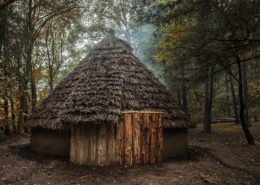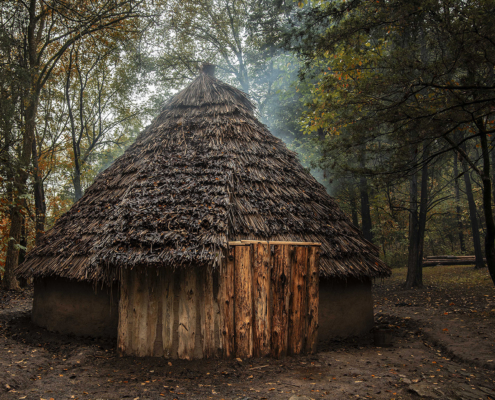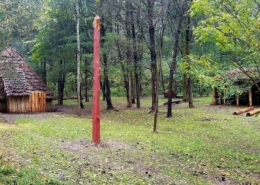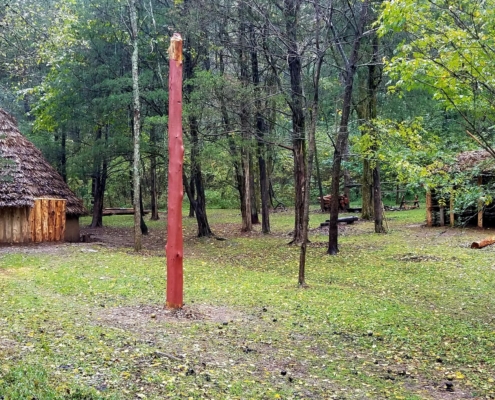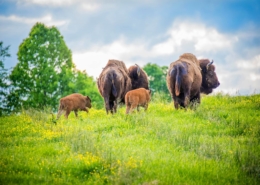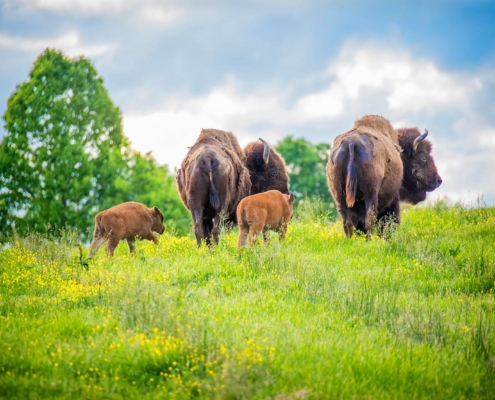Southeast Native American Village
For centuries, powerful nations such as the Cherokee, Choctaw, Chickasaw and Creek established dominance over the lands of what is now the Southeastern region of the United States. These tribes and others collectively created a unique culture that differentiated them from other regions and societies. One unique feature was the design and construction of their villages. There are several primary source descriptions of Southeastern winter and summer dwellings. The general census from documentary accounts and archaeological evidence indicate that the circular or octagonal winter houses were always paired with rectangular summer houses, and mid-18th-century observers concur that these structures were primary residences.
DeBrahm observed that:
Two or more Families join together in building a hot-house, about 30 feet Diameter, and 15 feet high, in form of a Cone, with Poles and thatched, without any air-hole, except a small Door about 3 feet high and 18 Inches wide. In the Center of the hot-house they burn fire of well-seasoned dry-wood; round the inside are Bedsteads fixed to the Studs, which support the Middle of each post; these Houses they resort to with their Children in the Winter Nights.
In regards to summer houses, DeBrahm noted:
The Indians build their houses of Posts, on which they lash in-and out-side canes, and plaster them over with white clay… they are about 12 feet wide and 20 or more long, covered with a clapboard roof, have no windows, but only one door; the fireplace is at one end of the house, with two bedsteads on both sides of the fire; the bedsteads are made of canes, raised from the ground about two feet, and covered with bear’s skin.
Based on years of research and using tools and techniques of the period, the newly constructed Native American Village at Wilderness Road State Park is designed to give visitors a better understanding of the Southeastern culture during the third quarter of the 18th century. Nestled in a hardwood forest to the west of Martin’s Station, the Native Village is an outdoor living history museum that offers a unique and fascinating educational experience.

